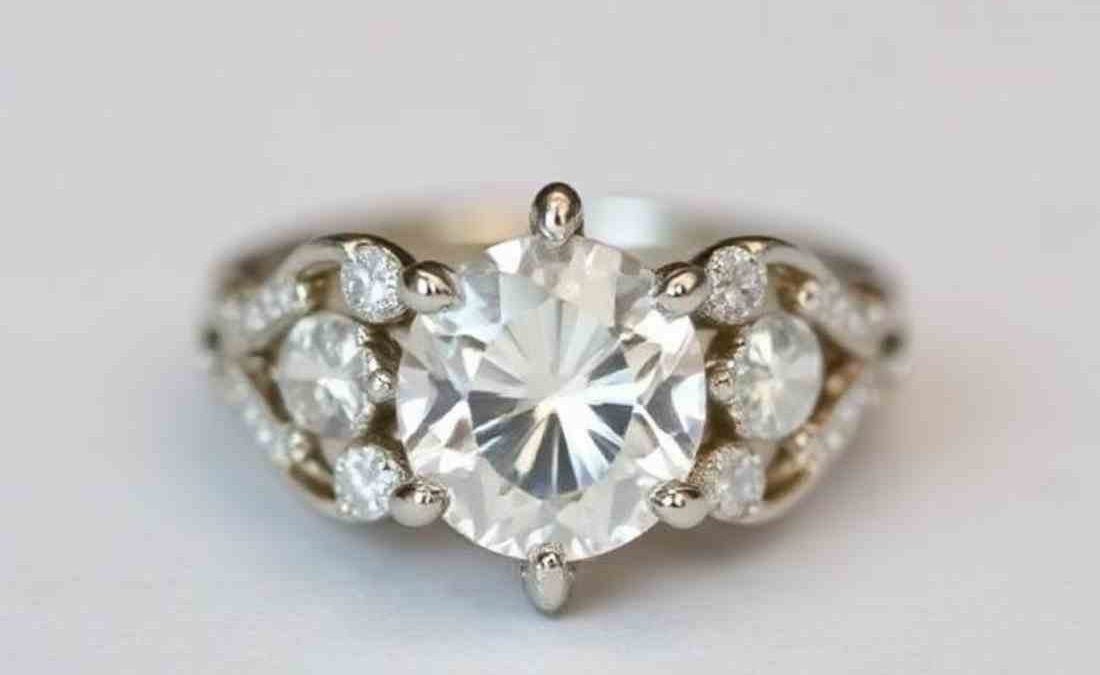Table of Contents
The Allure of White Gemstones: Origins, Properties, and Designs
White gemstones have long been admired for their purity, elegance, and versatility in jewelry. These gems exude timeless beauty, from diamonds to moonstones, and can complement any style. Below, we explore their origins, how they work in jewelry, where they are found, and popular design applications.
Where Does It Come From?
White gemstones form under various geological conditions, often deep within the Earth’s crust. Some of the most popular white gemstones include:
- Diamonds are the hardest known usual material, formed under extreme heat and pressure.
- White Sapphire: Various corundum are valued for their brilliance and durability.
- Pearl: Organic gems produced within mollusks like oysters.
- Moonstone: A feldspar mineral known for its milky glow (adularescence).
- White Topaz: A transparent, durable gem often used as a diamond alternative.
- Opal: Some opals exhibit a white base with vibrant play-of-color.
These gems are sourced from different parts of the world, with diamonds primarily mined in Africa, Russia, and Canada, while white sapphires are found in Sri Lanka and Madagascar.
How It Works in Jewelry
White gemstones are prized for neutrality, making them ideal for classic and modern jewelry. Their properties include:
- Brilliance & Fire: Diamonds and white sapphires reflect light beautifully, creating sparkle.
- Durability: Most white gemstones rank high on the Mohs hardness scale, making them appropriate for everyday wear.
- Versatility: They pair well with any metal (white gold, platinum, silver) and other colored gems.
White gemstones are often cut into rounds, ovals, or princess shapes to maximize light reflection. Some, like moonstone, are cut en cabochon to enhance their mystical glow.
Where It Is Found
White gemstones are mined across the globe:
- Diamonds: Major producers include Botswana, Russia, and Australia.
- White Sapphire: Sri Lanka, Madagascar, and Thailand.
- Pearls: Cultured in Japan, China, and Australia.
- Moonstone & Opal: Found in India, Sri Lanka, and Ethiopia.
- White Topaz: Brazil, Nigeria, and the U.S.
Ethical sourcing has become increasingly important, with lab-grown white gemstones (like synthetic diamonds) gaining popularity for their sustainability.
Design Applications
White gem-stones are a favorite among jewelers for their adaptability. Popular designs include:
- Engagement Rings: Diamonds and white sapphires are classic choices for solitaires and halo settings.
- Earrings: Studs, hoops, and dangle earrings featuring white gems add sophistication.
- Necklaces & Pendants: A single white gemstone pendant exudes minimalistic elegance.
- Bridal Jewelry: Pearls and moonstones are often used in vintage-inspired wedding sets.
- Statement Pieces: White opals or diamond-encrusted bracelets make bold fashion statements.
Designers also mix white gem-stones with colored stones (like rubies or emeralds) for contrast or set them in rose gold for a warm, modern look.
Conclusion
White gemstones remain a symbol of purity, luxury, and timeless beauty. Whether natural or lab-created, their versatility in jewelry design ensures they remain a staple in collections worldwide. From engagement rings to heirloom necklaces, these gems continue to captivate with their understated elegance.


